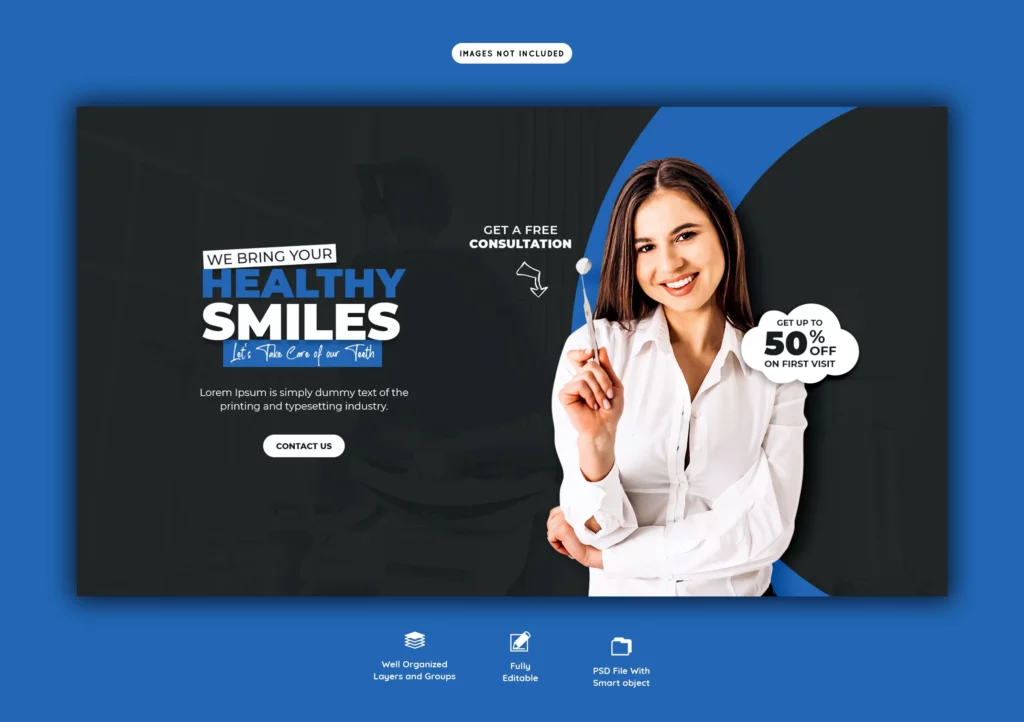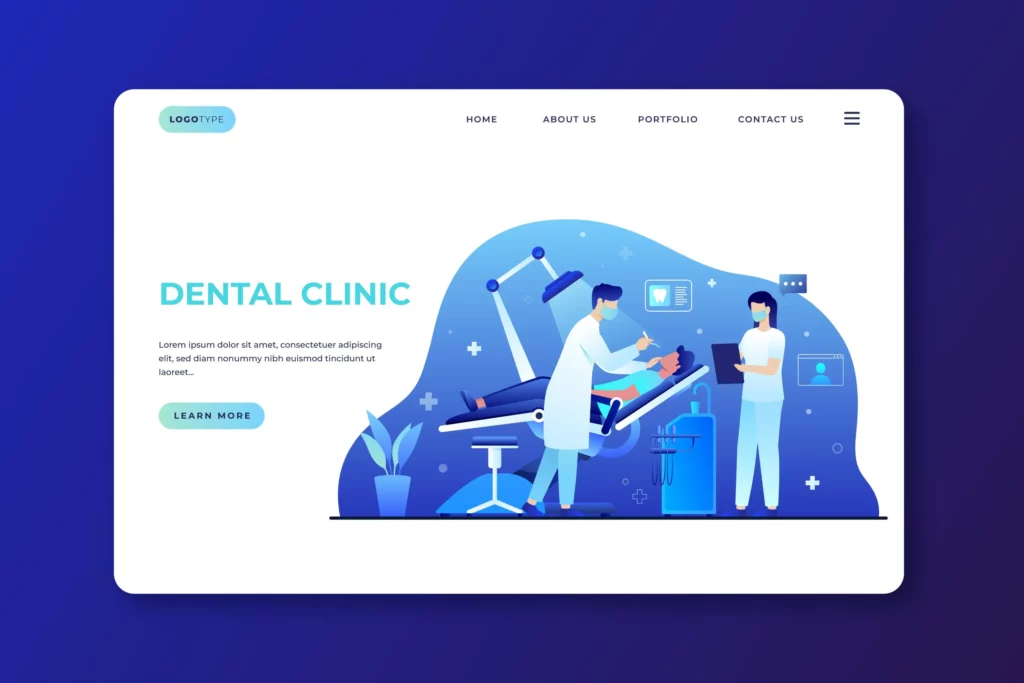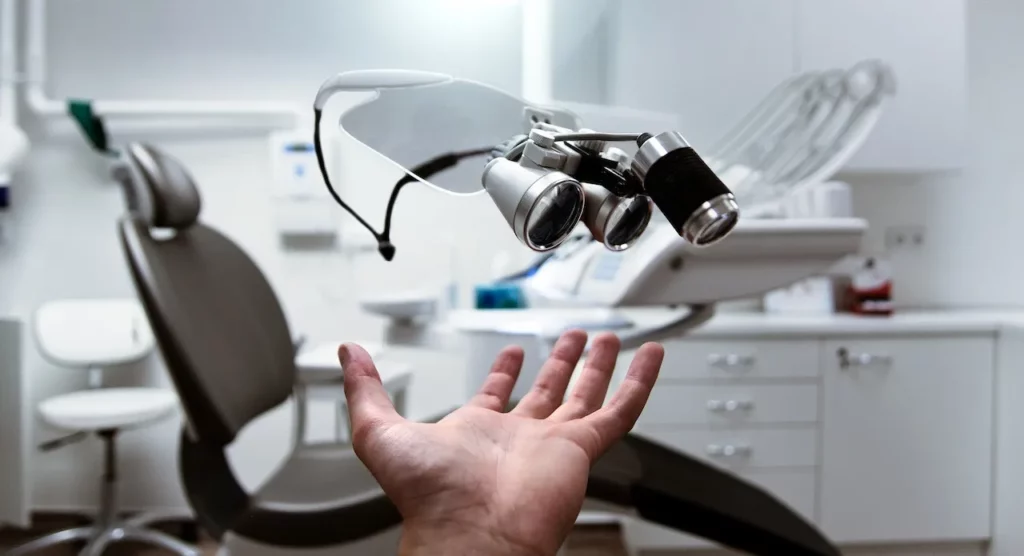Google Ads for Dentists is the perfect way to ensure your dental practice stands out from the competition. As more and more patients turn to the internet to find healthcare providers, having a strong online presence is essential for success.
With Google Ads, you can create a personalized campaign that boosts your visibility and attracts new patients. In this blog post, we will discuss the benefits of using Google Ads for dentists and provide some useful tips on how to get the most out of your campaigns with the expert’s help from Vancouver SEO.
Why Google Ads are Important for dental practices
In today’s digital world, having a strong online presence is key to attracting new patients to your dental practice. Google Ads for dentists is a powerful tool that can help you increase your online visibility and attract more patients.
By utilizing a guide to Google Ads for dentists, you can create targeted ad campaigns that reach the right audience at the right time. With Google Ads management for dentists, you can track and optimize your ad performance, ensuring that you are getting the most out of your advertising budget.
Don’t miss out on the benefits of Google Ads for dentists – start leveraging this powerful tool today!

Setting Up A Google Ads Account For Your Dental Practice
If you’re ready to enhance your online visibility, setting up a Google Ads account is a great first step.
Here’s a quick guide to getting started with Google Ads management for dentists:
1. Sign Up For Google Ads:
To get started, head to the Google Ads website and sign up for an account. Be sure to use an email address associated with your dental practice.
2. Set Your Budget:
Google Ads is a pay-per-click advertising platform, so it’s important to set a budget that makes sense for your practice. Consider how much you’re willing to spend per day or month on your ads.
3. Choose Your Ad Format:
Google Ads offers a variety of ad formats, including search ads, display ads, and video ads. For dental practices, search ads may be the most effective format.
4. Write Your Ad Copy:
Once you’ve chosen your ad format, it’s time to write your ad copy. Be sure to highlight what makes your practice unique, such as your years of experience, state-of-the-art equipment, or compassionate patient care.
5. Choose Your Keywords:
To ensure your ads are shown to the right audience, it’s important to choose relevant keywords. Consider using keywords related to your services, such as “teeth whitening” or “dental implants.”
6. Set Your Targeting Options:
Google Ads offers a range of targeting options, including location, language, and demographics. Consider targeting patients in your local area, or those who are searching for dental services in your city.
7. Launch Your Ad Campaign:
Once you’ve set up your Google Ads account and created your ad campaign, it’s time to launch it. Keep an eye on your ad performance and adjust your budget, ad copy, or targeting as needed.
By following this guide to Google Ads for dentists, you’ll be well on your way to enhancing your online visibility and attracting more patients to your practice.

Creating Effective Ad Campaigns
Once you have set up your Google Ads account, it’s time to start creating effective ad campaigns that will attract potential patients to your dental practice.
Here Are Some Tips To Help You Create Compelling Ads With Google Ads Management For Dentists And A Guide To Google Ads For Dentists:
1. Use Relevant Keywords:
Make sure your ad copy includes keywords that potential patients are likely to search for when looking for dental services. This will help your ad appear in search results, and attract the right audience.
2. Use Attention-Grabbing Headlines:
Your ad’s headline should be concise, informative, and attention-grabbing. Use clear and concise language to convey your message and include relevant details like your practice name, services offered, and any unique selling points.
3. Highlight Your Unique Selling Points:
What sets your dental practice apart from the competition? Highlight these unique selling points in your ad copy to help attract potential patients. These could be things like a friendly and welcoming team, state-of-the-art equipment, or special promotions.
4. Use Eye-Catching Visuals:
Including high-quality images or videos in your ads can help grab the attention of potential patients. Make sure the visuals you use are relevant to your practice and align with your branding.
5. Include A Call-To-Action:
Don’t forget to include a call-to-action (CTA) in your ad copy. A CTA is a statement that encourages potential patients to take a specific action, such as booking an appointment, calling your office, or visiting your website.
By following these tips, you can create effective ad campaigns that will help attract new patients to your dental practice. And with the help of Google ads management for dentists and the guide to Google Ads for dentists, you can optimize your campaigns for better results.

Targeting The Right Audience For Your Ads
When it comes to Google Ads for dentists, it’s not just about creating eye-catching ads, it’s also about ensuring they reach the right audience.
Here Are Some Key Strategies For Targeting The Right Audience For Your Dental Practice’s Google Ads:
Geographic Targeting:
Target patients within your practice’s geographical location. You can customize your ads to appear in specific regions or cities, ensuring your practice is seen by potential patients in your area.
Keyword Targeting:
Choose keywords related to dental care, such as “dentist”, “dental clinic”, “teeth cleaning”, etc. These keywords help Google match your ads with people searching for relevant information or services.
Demographic Targeting:
Age, gender, and income level are some of the demographic factors that can help you better target your ads. For example, if your practice caters to older patients, you may want to target the 50+ age group.
Remarketing:
This involves targeting individuals who have already interacted with your practice, such as visiting your website or booking an appointment. Remarketing ads help keep your practice top of mind and increase the chances of these individuals choosing your practice for their dental needs.
Device Targeting:
Consider which devices your target audience uses to browse the internet. For example, if you find that many of your patients use mobile devices to access the internet, you may want to create mobile-specific ads that are optimized for smaller screens.
By using these targeting strategies, you can ensure your ads are reaching the right audience, increasing the likelihood of generating leads and growing your practice.
Analyzing and optimizing your ad performance
Once your Google Ads campaigns have been running for some time, it’s important to regularly analyze and optimize their performance to ensure that you’re getting the most out of your investment.
Here Are Some Steps To Take:
1. Review Your Campaign Data:
Check your Google Ads dashboard regularly to see how your ads are performing. Look at metrics such as impressions, clicks, click-through rates, and conversion rates to assess how well your campaigns are doing.
2. Identify Areas For Improvement:
Use the data to identify which campaigns, ad groups, and keywords are performing well and which ones aren’t. This will help you to focus your efforts on the areas that need the most attention.

3. Adjust Your Bids:
Consider adjusting your bids for underperforming campaigns or keywords. By bidding more aggressively on certain keywords, you can increase your ad’s visibility and potentially improve your click-through rates.
4. Refine Your Targeting:
If your ads aren’t getting enough traction, consider refining your targeting. Try adjusting your audience demographics, location, or device targeting to make sure you’re reaching the right people.
5. Test New Ad Variations:
Experiment with different ad copy and creatives to see what works best. Try testing variations in your headlines, descriptions, and images to see which ones get the most clicks and conversions.
6. Use Negative Keywords:
Add negative keywords to your campaigns to exclude certain search terms that may be irrelevant to your dental practice. This can help to improve the quality of your clicks and save you money on ad spend.
By regularly analyzing and optimizing your ad performance, you can maximize the effectiveness of your Google Ads for dentists‘ campaigns and increase your online visibility to potential patients.
Common Mistakes to Avoid in Google Ads for dental practices
Running a successful Google Ads campaign can be challenging, and even the most experienced digital marketers can fall into some common traps.
To Avoid Wasting Your Advertising Budget And Maximize The Effectiveness Of Your Google Ads For Dentists, Be Sure To Steer Clear Of These Common Mistakes:
Failing To Define Your Target Audience:
Not all dental patients are the same, and creating generic ads that appeal to everyone will result in lower click-through rates and poor conversions. Identify your ideal patient personas and tailor your ad copy and targeting options to meet their unique needs.
Neglecting Negative Keywords:
Including negative keywords in your campaigns can help prevent your ads from appearing in irrelevant search results. Without this optimization, you may end up paying for clicks from users who are looking for dental hygiene products or dental jobs rather than a dental practitioner.
Ignoring Ad Extensions:
Google Ads for dentists offers various ad extensions, including call extensions, site link extensions, and location extensions. Utilize these extensions to provide your audience with valuable information about your practice, such as your location, phone number, and services offered.
Focusing Solely On Search Ads:
While search ads are a vital component of Google Ads, don’t forget to experiment with display ads, video ads, and other formats. These can increase brand awareness, generate new leads, and expand your reach beyond the search engine results page.
Neglecting Conversion Tracking:
It’s essential to track your Google Ads conversions to measure the effectiveness of your campaigns and adjust your strategy as needed. Failing to do so can lead to missed opportunities and an inability to attribute results to specific campaigns.
Neglecting Mobile Optimization:
As more and more patients search for dental services on their mobile devices, ensuring your Google Ads are optimized for mobile is critical. Be sure to test your ads across various devices and make necessary adjustments to ensure they are mobile-friendly.
By avoiding these common Google Ads mistakes, dental practices can maximize the return on their advertising investment and achieve better online visibility and patient engagement.
To learn more about google ads you can simply contact us and one of our experts will be there to assist you.




